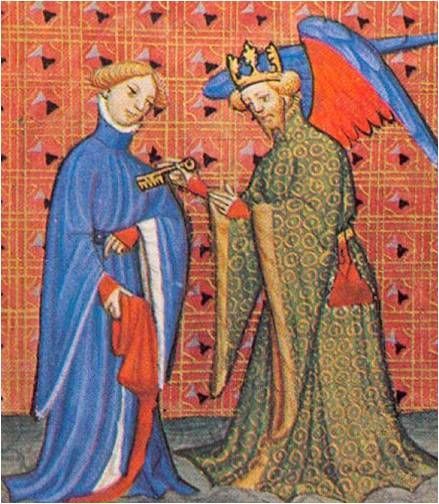Hopalanda Vs. Haincelín: Differences and Similarities
French-Burgundian medieval fashion is a fascinating topic that transports us to a time of great cultural and creative wealth. Two emblematic garments from this period, the Hopalanda and the Haincelín, stand out for their beauty and functionality. Although they share a common origin and certain decorative features, these garments have clear distinctions that made them unique for their specific use.
Similarities between the Hopalanda and the Haincelín
-
Origin and Historical Context:
- Both garments have their roots in the fashion of the French-Burgundian region, a hallmark of European clothing during the Middle Ages.
- They were primarily used in the court setting, standing out as luxury garments due to their association with ceremony and social status.
-
Materials and Techniques:
- They were made from fine materials such as wool, silk, and velvet, which provided them with an attractive and sophisticated appearance.
- The decorative details included lost sleeves, embellishments on the edges, and high collars, distinctive features of Late Gothic fashion.
-
Social Function:
- Both garments served not only to keep warm but also as symbols of status and personal wealth for those who wore them.
Differences between the Hopalanda and the Haincelín
-
Length and Design:
- Hopalanda: It was longer, often reaching the floor and could have a train. It was fitted at the shoulders and cinched with a belt.
- Haincelín: It was shorter and fitted, primarily used as an outer garment, making it more practical and functional for daily wear.
-
Use and Purpose:
- Hopalanda: It was intended for ceremonies and formal events due to its voluminous and distinctive design.
- Haincelín: Designed for a more informal setting, it was suitable for everyday warmth, reaffirming its versatility.
-
Decoration and Style:
- Hopalanda: Included an elaborate style with lost sleeves and high collars, reflecting a more ornamental and sophisticated taste.
- Haincelín: Featured a simpler, more functional style with closed sleeves and a lower collar, suitable for more practical use.

In studying these fascinating garments, the Hopalanda and the Haincelín, it is evident how dressing reflected more than just a functional or warmth need; it was also a means of communication about status, wealth, and occasion. The differences in design, length, and purpose highlighted how each garment adapted to the social and personal requirements of those times. While the Hopalanda shone in formal settings, the Haincelín served a more practical purpose, adapting to everyday life without losing its touch of elegance. Medieval fashion, with its rich variety of fabrics and decorations, remains a testament to the ingenuity and creativity of that era.
| Hopalanda | Haincelín | |
|---|---|---|
| Main Use | Formal ceremonies | Everyday warmth |
| Length | Long, to the floor | Short, fitted |
| Decoration | Elaborate, lost sleeves | Simple, closed sleeves |
| Main Materials | Wool, silk, velvet | Wool, silk, velvet |
















